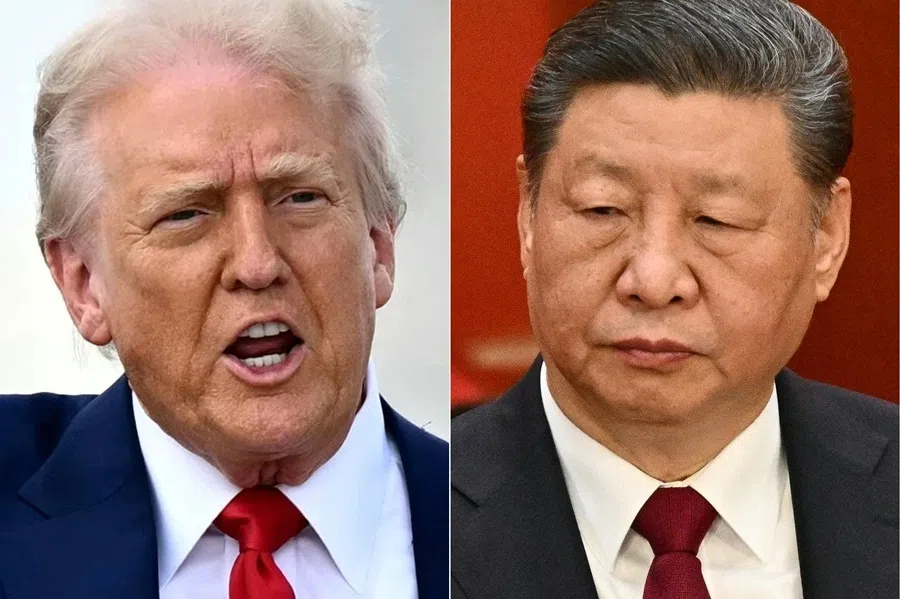Bulk snack stores sprout across China, reaching third- and fourth-tier cities
In recent years, bulk snack stores have surfaced and proliferated across China. Offering a wide variety at extremely low prices, such stores have proven popular with consumers. But how are these businesses surviving with such low profit margins, and what is driving the rise of bulk snack stores? Lianhe Zaobao correspondent Daryl Lim tells us more.

Vibrant neon signs, catchy original music and shelves filled with a dazzling array of snacks — these are the distinctive features of bulk snack stores in China. Stepping into these shops is akin to entering a candy house from fairy tales, with thousands of snacks available for one to choose from.
Bulk snack stores are a new type of chain snack store that has rapidly emerged in China in recent years. These stores merge the wide product range of supermarkets with the detailed categorisation of specialty snack stores, offering affordable wholesale prices and a convenient shopping experience to meet the needs of modern consumers.
New snacking trends
Twenty-seven-year-old Qiu Rishun opened a bulk snack store franchise in Shenzhen’s Futian District in October. He told Lianhe Zaobao that he chose franchising because several relatives had successfully joined similar chains in the past two years, gaining valuable experience in brand selection, location and customer targeting. This inspired him to enter the industry.
“Since the pandemic, overall consumption in China has declined, and people are prioritising value. Inexpensive snacks have become a more appealing option,” he explained.
Just how cheap are these bulk snacks? Visits to several stores revealed prices averaging 25% lower than supermarkets, sometimes even undercutting online wholesale giant Pinduoduo.
While this is a more significant investment than a small convenience store, Qiu believes the unmatched price advantage and brand subsidies offer substantial growth potential.

For example, a 52g pack of Wang Wang rice crackers typically costing 6 RMB (US$0.83) in supermarkets is just 4.5 RMB at a bulk snack store. While available on Pinduoduo for 4.8 RMB, it’s only sold in packs of ten.
Better growth potential than convenience store?
Qiu explained that the price advantage of bulk snack stores is due to their “superb supply chain”. Their extensive sales networks allow their headquarters to purchase in large quantities and negotiate directly with upstream suppliers, ensuring lower purchase prices compared to other channels.
“Our retail prices are usually marked up by 10% to 25% over the cost price, lower than the typical supermarket’s 30% or more,” Qiu added. “For highly competitive products, our profit margins can even be single-digit.”
These ultra-low margins mean a longer return on investment. Qiu revealed that the initial investment for a bulk snack store — which includes rent, transfer fees, miscellaneous fees and stocking funds — would amount to roughly 1 million RMB. While this is a more significant investment than a small convenience store, Qiu believes the unmatched price advantage and brand subsidies offer substantial growth potential.

“We are the classic example of small profits, fast turnover. With the high rent and labour costs in Shenzhen, it will take at least one to two years for us to break even based on the current business outlook”.
While such snack stores first appeared in China as early as 2010, they have experienced rapid growth only recently, becoming a bright spot amidst the sluggish traditional offline retail market.
Rapid growth of the bulk snack industry
According to the 2023 edition of China’s bulk snack industry blue book, the market size of China’s bulk snack market rapidly increased from 900 million RMB in 2017 to 40.7 billion RMB in 2022. In 2023, this figure nearly doubled to 80.9 billion RMB and is expected to reach 123.9 billion RMB by 2025.
The rapid expansion of bulk snack stores in China is inseparable from the significant influx of capital. Currently, the two giants in China’s bulk snack industry are Mingming Henmang (鸣鸣很忙) and Wanchen Group (万辰集团).
Established in November last year through the merger of Lingshi Henmang (零食很忙) and Zhao Yiming Lingshi (赵一鸣零食), Mingming Henmang now boasts over 10,000 stores.
Wanchen Group, an edible fungi company that later diversified into the snack sector, is the only listed company in the industry. Over the past two years, it has actively expanded its bulk snack business through large-scale joint ventures and acquisitions. Its brands include Haoxianglai (好想来) and Laopo Daren (老婆大人), with the number of stores exceeding 9,000.
In some third- and fourth-tier cities in China, “bulk snack streets” have even appeared, where four or five bulk snack stores can be seen dotting a street just a few hundred metres long.

Driven by the two giants’ aggressive market expansion, the number of bulk snack stores has experienced rapid growth. Data from iiMedia Research shows that there were approximately 2,500 bulk snack stores in China at the end of 2021. This number reached 25,000 at the end of 2023 and is expected to exceed 30,000 in 2025.
In some third- and fourth-tier cities in China, “bulk snack streets” have even appeared, where four or five bulk snack stores can be seen dotting a street just a few hundred metres long.
Reasons for the bulk snack store boom
Fu Fangjian, an associate professor of finance at Singapore Management University (SMU)’s Lee Kong Chian School of Business, said in an interview that third- and fourth-tier cities not only offer lower operating costs, but their positioning of affordable and quality goods also better caters to the needs of sinking markets with their rich experiences, variety and novelty, therefore demonstrating significant growth potential.
From a broader perspective, Fu thinks that the rapid rise of bulk snack stores across the country can be attributed to China’s promotion of a “unified national market”.
He explained that improvements in China’s logistics and infrastructure have laid the foundation for market integration and facilitated the development of standardised operating models. Businesses can adopt uniform operating methods across different regions, thereby reducing management challenges and costs.
Challenges on the horizon for bulk snack retailers
The rapid expansion of bulk snack stores has intensified industry competition, forcing some operators to be embroiled in price wars in an already low-margin sector.
... price wars are often initiated by well-funded, large enterprises, which squeezes traditional small stores and limits their viability, even driving some out of business. — Associate Professor Fu Fangjian, Lee Kong Chian School of Business, SMU

Qiu revealed that under such circumstances, franchisees can apply to the head office to lower prices on specific products. If deemed to be malicious competition, the head office will subsidise the store, allowing it to sell the product at a price close to cost, or even at a negative gross profit margin.
He said that the company’s strategy is to continue selling even at a loss, sacrificing the profit on individual items and compensating with other more profitable products.
“These are typically big-brand products that are extremely appealing to consumers. Removing them would not only affect store operations but also the company’s overall brand image,” he said.
Fu pointed out that price wars are often initiated by well-funded, large enterprises, which squeezes traditional small stores and limits their viability, even driving some out of business.
He warned, “This could significantly reduce the industry’s diversity and vitality, making it difficult for enterprises to innovate and improve quality. Ultimately, price wars weaken the overall competitiveness of the entire sector.”
This article was first published in Lianhe Zaobao as “量贩零食店靠薄利多销近年迅速崛起”.



![[Big read] Prayers and packed bags: How China’s youth are navigating a jobless future](https://cassette.sphdigital.com.sg/image/thinkchina/16c6d4d5346edf02a0455054f2f7c9bf5e238af6a1cc83d5c052e875fe301fc7)

